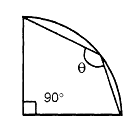 Multiple Choice Questions
Multiple Choice QuestionsTo detect mutation (GAG →GTG) allele specific hybridization method is used. Four members of an affected family are investigated. DNA isolated from blood samples of parents and two offspring’s are spotted on a membrane after appropriate rocessing and probed with either TGACTCCTGAGGAGAAGTC (first probe) or TGACTCCTGTGGAGAAGTC (second probe) after labeling. While probed with first oligonucleotide, signals are obtained for the positions where DNA are spotted from parents and offspring II. When probed with second oligonucleotide, signals are obtained at position where DNA from the parents and offspring I are spotted. Results are shown below:
| Father | Mother | Offspring I | Offspring II | |
| First Probe | + | + | - | + |
| Second Probe | + | + | + | - |
On the basis of the result which of the following statements is correct?
Parents are affected
Offspring I is affected
Offspring II is a carrier
Offspring II is affected
A transposon carrying a promoterless β‐galactosidase (lac‐Z) was used to create insertional mutation in the vir region of Ti‐plasmid of Agrobacterium tumefaciens. All the mutants in which lac Z fusion was in frame were divided into the following three groups:
A. The virulence of the bacteria was completely lost and the lac Z was induced by acetosyringone
B. The virulence of the bacteria was reduced and the lac Z was induced by acetosyringone
C. The virulence of the bacteria was completely lost and lac Z was not induced by acetosyringone
Which of the following assumptions are valid about these mutants
In group A, the insertion could be in vir B, C, D or G; in group B the insertion could be in vir C or E; and in group C the insertion could be in vir A or G
In group A, insertion could be in vir A, B, C or D; in group B, the insertion could be in either vir C or D; and in group C the insertion could be in vir G
In group A, the insertion could be in vir A; in group B, the inertion could be in vir B; and in group C the insertion could be in vir C
In group A, the insertion could be in vir G; in group B, the insertion could be in vir B, D or E; in group C, the insertion could be in vir A
What is the angle (θ) in the quadrant of a circle shown below?

135°
90°
120°
May have only between 90° and 120°
A.
135°
The angle (θ) in the quadrant of a circle is 135°.
In () ABC, angle A is larger than angle C and smaller than angle B by the same amount. If angle B is 67°, angle C is.
67°
53°
60°
57°
See the following mathematical manipulations.
(i) Let x = 5
(ii) Then x2 – 25 = x – 5
(iii)(x – 5) (x + 5) = x – 5
(iv) x + 5 = 1 [Cancelling (x – 5) from both sides]
(v) 10 = 1 [Putting x = 5]
Which of the above is the wrong step?
(i) to (ii)
(ii) to (iii)
(iii) to (iv)
(iv) to (v)
Restriction endonuclease cleaves DNA molecules at specific ‘recognition sites’. One such enzyme has four recognition sites on a circular DNA molecule. After complete digestion, how many fragments would be produced upon reaction with this enzyme?
4
5
3
6
A solid cube of side L floats on water with 20% of its volume under water. Cubes identical to it are piled one by one on it. Assume that the cubes do not slip or topple, and the contact between their surfaces is perfect. How many cubes are required to submerge one cube completely?
4
5
6
Infinite
A cupboard is filled with a large number of balls of 6 different colors. You already have one ball of each color. If you are blind-folded, how many balls do you need to draw to be sure of having 3 color-matched pairs of balls?
3
4
5
6
Which of the following processes interferes in sequence- based phylogeny?
Horizontal gene transfer
Adaptive mutations
DNA repair
Reverse transcription
A sample counted for one minute shows a count rate of 752 cpm. For how many minutes should it be counted to have 1% probable error?
13
5
2
75
